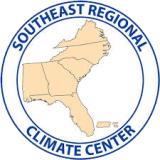Southeast Climate Monthly Webinar: February 8, 2022
A more active pattern of precipitation in January and early February helped alleviate drought conditions following a dry November and December. We are still in a La Niña Advisory, and it should continue through April. The three-month outlook shows a higher probability of above-normal temperatures and below-normal precipitation. Streamflow levels are moving back to normal. Some flooding is still expected for late winter/early spring, which is common as this is the recharge period in the region, but the magnitude and number of flood events will likely be below what is typical for the period. Want to learn more about river flood climatology in the Southeast? Check out today’s special presentation! This webinar also provides an introduction to the updated State Climate Summaries.
About This Webinar
The Southeast Climate monthly webinar series is hosted by the Southeast Regional Climate Center, the National Integrated Drought Information System (NIDIS), and the NOAA National Weather Service. These webinars provide the region with timely information on current and developing climate conditions such as drought, floods, and tropical storms, as well as climatic events like El Niño and La Niña. Speakers may also discuss the impacts of these conditions on topics such as agriculture production, water resources, wildfires, and ecosystems.





